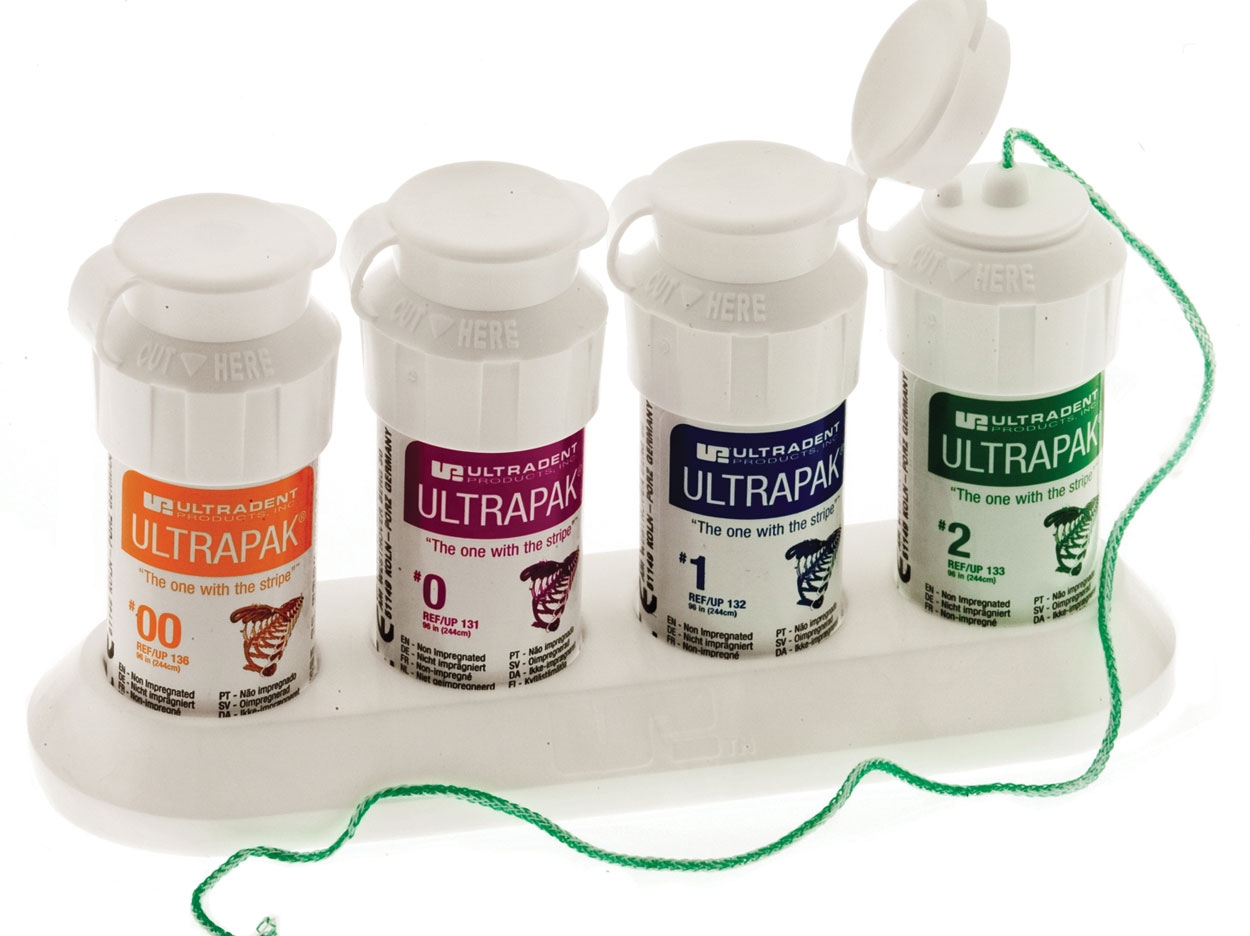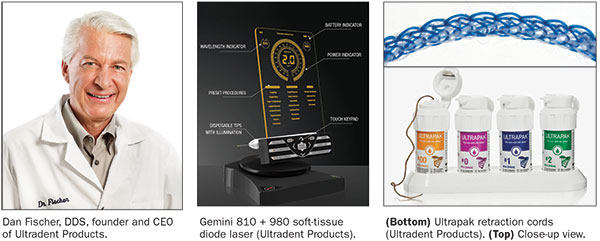
The company Dr. Fischer built may seem like a small, niche brand, but Ultradent is far from small. The company is headquartered in South Jordan, Utah.
I recently had a chance to review a new soft-tissue laser from Ultradent Products: the Gemini 810 + 980 diode soft-tissue laser. (More on that later.) It struck me that when I think of Ultradent Products, I don’t think of high-tech equipment; the name conjures up a variety of restorative materials, little syringes with unique delivery tips, impression materials, Opalescence tooth whitening systems, and, of course, the technological innovation of the industry-leading VALO curing lights.
I met with Dr. Dan Fisher (founder and CEO of Ultradent) a few years ago, and I found him to be quite fascinating and different than a typical executive. He is a very genuine, humble, and down-to-earth person and a man of very strong beliefs, which he is not afraid to state privately or publically. His beliefs include political views and a strong conviction to provide dental patients with effective and conservative care. It is the latter that drove him to create his first innovative dental product. Dr. Fisher is a graduate of Loma Linda University and had a full-time private dental practice for 15 years. In 1976, while in private practice, he invented Astringedent hemostatic, which, according to Ultradent, is “an answer to the need for a tissue management product that achieved more rapid, profound hemostasis. His desire to market his product and to continue to develop more advanced dental solutions led him to found Ultradent Products, Inc, in 1979.”
 |
The company Dr. Fischer built may seem like a small, niche company compared to better-known brands, but Ultradent is far from small. The company is headquartered in South Jordan, Utah, and is housed in multiple buildings totaling about 400,000 square feet. Ultradent employs more than 1,100 people. Beyond his ability to create a thriving company, Dr. Fisher also gives back to the community locally and globally. He also does this personally as well as through the company. In addition to donating products to numerous charitable causes, Ultradent sponsors a nonprofit organization called the Diversity Foundation: a nonprofit, progressive outreach program committed to preventing hate crimes and intolerance. The program promotes diversity and fosters multicultural awareness among individuals from all backgrounds, according to Ultradent.
The products created by Dr. Fischer’s company are as noteworthy as the man himself. Many of the products we use from Ultradent come in syringes of all sizes, including the aforementioned Astringedent hemostatic; etching and bonding agents; sealants, such as the popular UltraSeal XT plus; restorative materials, such as PermaFlo flowable composite; and, of course, the very popular Opalescence tooth whitening system. These syringes are all manufactured at Ultradent’s facility.
Earlier this year, I wrote here about another product created onsite at Ultradent’s facility: the VALO and VALO Grand curing lights. To summarize, they are not only useful in curing all composites and bonding agents, but they also seem to be almost indestructible. There is not a single dental office where someone has not dropped a piece of equipment, leading to a hush in the room and a short prayer that the device will still operate. To quote the manufacturer, VALO lights are “precision milled from a solid bar of aircraft aluminum [and the] unibody construction ensures unsurpassed durability.”
One of the indispensable products in my practice is the Ultrapak retraction cord. When taking a digital (or any) impression, clear retraction is essential. This cord, unlike others, is composed of thousands of knitted loops, so when you place it in the sulcus, it typically does not jump out. The No. 000 and even No. 00 sizes are great for a double-cord technique and can be left in during the digital scan.
Although the Ultrapak cord is great for retraction, lasers are certainly another option. As I stated at the outset, Ultradent recently launched a unique soft-tissue laser. Any of you who have looked in this space have likely realized there is confusion regarding wattage and frequency. Ultradent’s new laser—the Gemini 810 + 980 diode soft-tissue laser—gives you a choice of 810 nm, which is typically attracted to melanin, and 980 nm, which works more with water absorption. You might want to do a little research, though, on the manufacturers who make lasers that typically have one wavelength, and then determine the advantages of each.
As Ultradent continues to develop its own new products, such as Thermo Clone VPS impression material (which doesn’t begin setting until it is in the mouth), the company also looks for new products in the marketplace and partners with their creators. Two examples are the Triodent V3 sectional matrix system and the Uveneer direct composite template system. Dr. Simon McDonald, who developed the V3 system in New Zealand, and Dr. Sigal Jacobsen, who created the Uveneer system in Australia, met with Dr. Fisher to partner with Ultradent. Creating those partnerships has filled important gaps in the restorative marketplace and increased the comprehensive solutions offered by Ultradent.
In our dental world of corporate conglomerates, it is refreshing to see companies like Ultradent and people like Dr. Dan Fisher in our midst. I hope to visit Ultradent’s facilities when I am teaching at the Utah Dental Association Convention next April and then report back to you all.
Related Articles
Direct Composite Diastema Closure
Curing Light Features Larger Head Size and 50% Bigger Lens
Endodontic Motor Operates in Reciprocation and Rotary Modes












